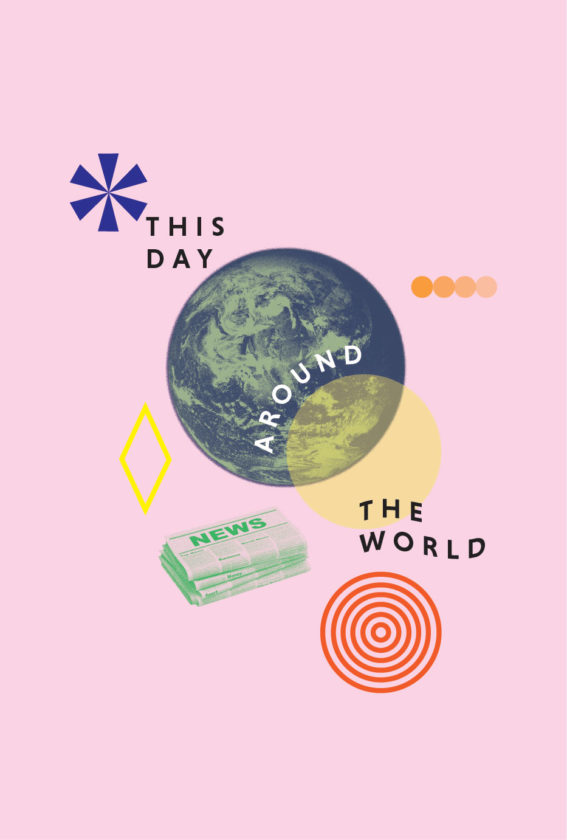Earth art
Where do art, culture and nature intersect? How do we understand the complex systems of our environment? These are some of the questions posed by the outdoor exhibition on view at Tryon Creek State Park, which opened Sept. 17. This modest exhibition of five new installations commissioned by the Friends of Tryon brings eco-art to a place that is accessible from the metro area.
Contemporary artists are building on the field of environmental art that has been rapidly expanding since the 1970s, when earth artists such as Walter de Maria, Robert Smithson and Ana Mendieta brought natural materials into the gallery and art objects into the natural world. Crucial to the development of earth art was Smithson’s distinction between the “site” and the “non-site,” which clearly established the dialectic between the natural and the human worlds.
When first entering the Trillium Trail, sounds of nature are clearly amplified on speakers implanted within the soil, an installation by Carrie Bodle. Once immersed in the forest, there is an eerie feeling brought about by the cacophony of ambient sounds emitted by conspicuous green tubes placed within the forest floor. The sounds that initially seem like nature amplified become markedly urbanized with amorphous voices and sounds of tubular abstraction. The quietude of the forest is impeded by the excessive attention the speakers draw to themselves, whereas they could blend more seamlessly with the surroundings if they were in more conspicuous locations and installed with varied volumes.
”We wanted to do something that innovated on the aesthetic value of the forest, taking a look at it in a different way,” said Stephanie Wagner, the executive director of Friends of Tryon.
The Natural Cycles exhibit has introduced the park to some new people, giving them a chance to discover its natural wonders.
Wagner also commented on the transformative powers of the artwork on display: “It has really given people a new perspective on the forest, demonstrating that sometimes we don’t think about our feelings in the forest, and this helps us focus those feelings.”
All of the installations will be up for one year, so the cycles of nature will reveal themselves during all of the four seasons.
The most compelling piece is The Lichen Link, installed by Leta Evaskus and Christine Harrington, a team from Seattle. It catches the viewer’s attention without excessive flourish, inviting the passerby to see the forest anew through a fence-like structure composed of bamboo, twine and lichen. The ephemeral lichen is delicately fastened to the twine rungs of the piece, juxtaposed by the sturdy bamboo posts that hold the lichen suspended in the air. This piece is more susceptible to nature’s flux than the other work in this exhibit, dangling in the wind and changing colors based on rainfall and sunlight. “I particularly like temporary public art because you can use ephemeral materials such as lichen,” Harrington said.
There is a short gap in the fence on one side, which Evaskus intended as a window-like space that invites viewers to see what is already there. “We are looking at humans’ relationship with nature, supporting each other. We want people to reflect back on themselves,” she said.
Evaskus’ background in photography influences the shift in perspective that occurs while viewing the piece up close from the trail with the forest in the backdrop. The subtlety of their installation allows a gentle merging of foreground and background while walking along the path, turning into a state of transcendence where the self and nature experience a moment of union.
Charissa Brock’s installation is built almost entirely with segments of bamboo, relying on the expressive properties of the material, such as its hollow core and malleable structure, to build sculptural forms inside and around trees alongside the trail. Her stacking of bamboo segments serves as a meditation on negative space, most effectively in a small piece installed at the base of a tree in a crack that opens onto the forest floor. In the other two pieces, Brock’s creation takes on a towering presence that stands in contrast to the inherent properties of the trees themselves, becoming particularly ornate in the wing-like structures that flare outside the trees’ trunks. Nonetheless, the artist certainly achieves a mystical presence in the forest and engages the imagination with her installations of natural wonder.
In this exhibit the artists are all answering the question, “What is nature?” by using natural materials and challenging the way we look at our environment, framing the relationship between humans and nature in a fresh light. As our nation leads the globe toward rapid environmental destruction, this exhibition sends a pertinent call for us to be mindful of the minutiae of our ecosystem.




